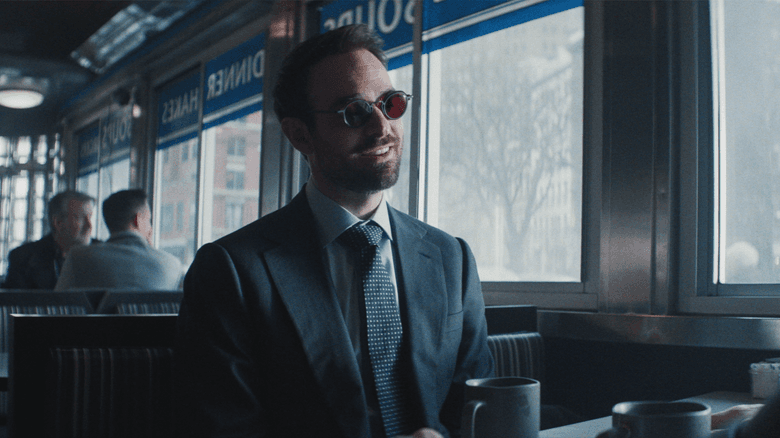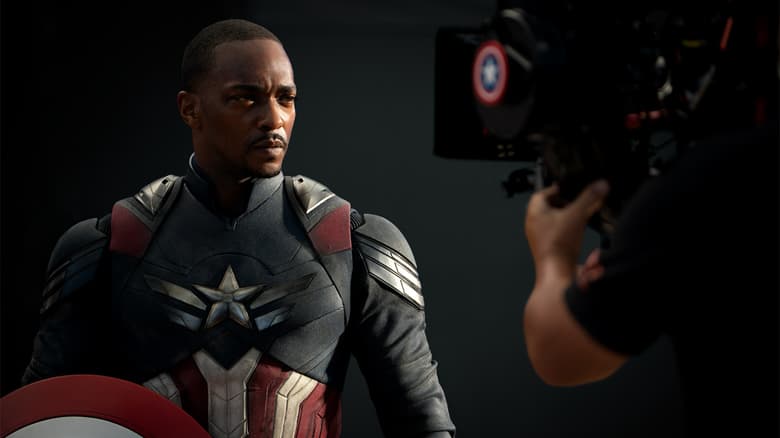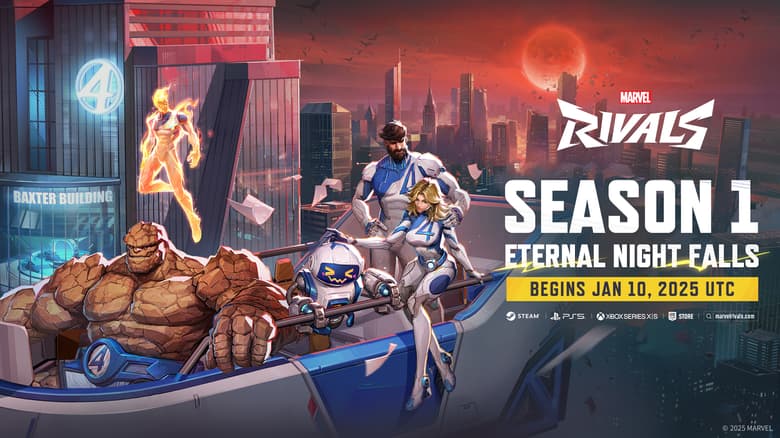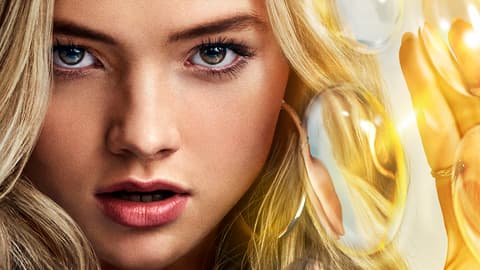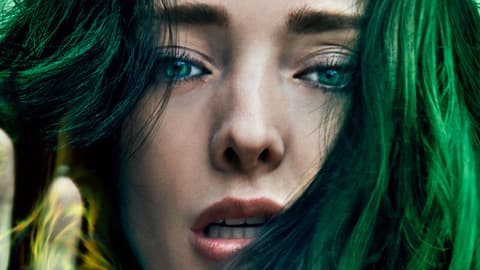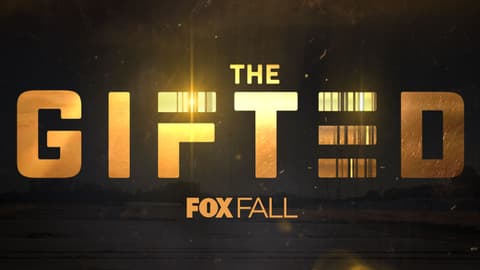‘The Gifted’ Executive Producer on Season 1’s End and Setting Up Season 2
Matt Nix discusses Lorna's big decisions in the FOX show's season finale and much more.
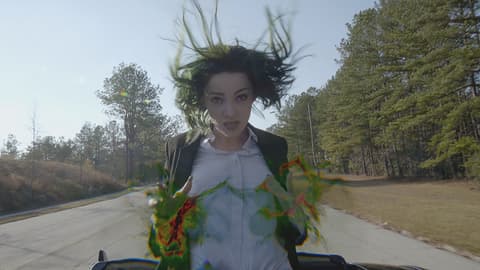
Note: Full spoilers for “The Gifted” Season 1 finale (and the entire season) follow. To catch up on the FOX series, you can watch the entire season on FOX.com or Hulu!
The first season of “The Gifted” has come to an end, with an eventful finale in which Polaris made some huge decisions, including the reformation of the Hellfire Club alongside the Frost sisters – whose initial membership now includes Andy Strucker, who has parted ways with his family.
Marvel.com spoke to “The Gifted” executive producer and showrunner, Matt Nix, about many of the big events that occurred as the season wrapped up, their comic book inspirations, and how they help set the stage for the already-ordered Season 2 of the series.
Marvel.com: Let’s kick off discussing the very end, because that’s quite a big split that happened there with the group. Can you talk about that and how you decided that Lauren and Andy, among the main characters, would be the ones that decided to take this different path?
Matt Nix: Basically the idea is that everyone on the show kind of wants the same things. They care about each other but they’re deeply conflicted over how to go about it. Part of it is I had been thinking a lot about the classic X-Men and the idea of the Brotherhood and the X-Men — all of which has been explored — and thinking about what is our version of that? In this universe, in this version of the X-Men universe, what is that dynamic? And the idea is that everyone actually is interested in the same thing. A lot of it is just that they’re doing it on behalf of each other. So the thinking with Polaris was she looks at Eclipse and she realizes at the end of the season that someone is going to need to do something terrible here. But it’s not going to be Eclipse because he came from this violent place and has turned his back on that and decided that that’s not who he wants to be or should be and she loves him and doesn’t want to put him in a position where he has to become something that he hates. Thunderbird can’t do it because he feels the weight of the mantle of the X-Men. He feels an obligation to all of these things. And as someone who cares about the goals and has helped build this thing, she feels like she had to leave it to save it. She had to do this thing that would drive a wedge between her and the people she cares about. She feels it has to be done and she’s the only one who can do it. Partially because it’s accepting her heritage but also partially because she’s got the power and she’s willing to use it.

Emma Dumont in “The Gifted.”
Marvel.com: What about Andy?
Matt Nix: I think for Andy, there’s a bit of a similar dynamic where he looks at his family and the secret of who his grandfather was and their family history. As someone who was never proud of who he was, he’s now realizing there’s an opportunity to be proud of who we are and to stand up for what we believe in and to him — he was kind of responsible for doing this terrible thing because of family and now he has an obligation to fight for them and if they’re not willing to accept what needs to be done, then he has to do it for them. What I really responded to in that split was everybody is a hero in that moment. Andy is trying to do something good, Polaris is trying to do something good and the Mutant Underground is trying to do something good. Everybody is right, but at the same time it points them in the direction of possible tragic consequences and tears these families apart.
Marvel.com: You also destroyed the Mutant Underground headquarters. Did you want to mix up the setting of the series going forward?
Matt Nix: Oh, absolutely. It’s sort of a long story, but in developing the series, one of the things we realized was that people kind of needed to get their heads around the Mutant Underground as a place and a specific group. Because visually it’s easier to go “Okay that place is the Mutant Underground. That’s who they are. That’s what they are. That’s where they are. That’s what it looks like.” But the idea of the Mutant Underground was more of a network. Much more akin to the underground railroad and that kind of thing than to a specific place. We talked about that, the idea that this was just one of a number of stations, but at the same time it was the most important of them. But the original conception was really that the mutants had to carry out the mission of helping mutants while living among humans. To me, that’s a really interesting thing to have to do, right? Because most of them can pass as non-mutants. So they can exist in the world. Now we’ve seen this organization in this building, the Mutant Underground, versus this organization the Sentinel Services, in their building, the Sentinel Services Headquarters. It’s a simple conceit that helps you get your head around the world and what it is, but going into the second season, I wanted to spread it out more and get to see mutants in the world dealing with the issues in society if that makes sense. So it was a good opportunity, also, in splitting the groups, to be able to see different parts of society. The Hellfire Club obviously takes place in a much more large scale kind of world and the Mutant Underground’s continued survival really needs to be in society, in the shadows.

(L-R) Hellfire returns! Skyler Samuels, Emma Dumont, Jeff Daniel Phillips, Hayley Lovitt, and Percy Hynes White in “The Gifted.”
Marvel.com: The Hellfire club traditionally is a group that is very powerful but often filled with in-fighting. Might we expect it won’t be smooth sailing as they try to form this new incarnation?
Matt Nix: Well, I think that long term certainly, I think the dynamics of The Hellfire Club in the comics and if you get a bunch of people together who are like “The ends justify the means. Lt’s use our power as we see fit!” then it’s tough to say that’s going to work out well long term. We certainly have some of those dynamics. At the same time, this exists in a world where everybody is really on their heels. So the aspiration of the Frost Sisters / Stepford Cuckoos and the rest of their little group is to rebuild the Hellfire Club, but they are a ways from being able to do that. They don’t have a Black Rook. They’re pretty far from that [version], you know what I mean? They still have to work on the Kings and Queens and they’ve got a long way to go. The question going into Season 2 is can they even do this? Can they rebuild it? And so I think you already see in what we’ve portrayed so far, there’s a pretty prickly relationship at the top there and that will continue. But believe me there’s a reason I was interested in it and I love the Hellfire Club in the comics. Man, as an organization they really need a human resources department to help them resolve [issues]… [Laughs] Their go to move is it’s an organization whose main activity at the upper management level is trying to kill each other. It’s a little hard to sustain.
Marvel.com: [Laughs] Right. They need some meetings where they talk about working together better.
Matt Nix: Yeah, they’re like “We need to work on our communication. There are seminars we need to go to.” At the same time, one thing I think is interesting and we’ve talked about in the writers room — and I don’t know what we’ll do with it — but one thing that’s interesting with the Hellfire Club is that it’s actually set up to have internal rivalries. That is weird. I can’t think of a single other organization that — I guess with the possible exception of Lincoln’s Cabinet — that is set up to have internal rivalries because the idea is that they’re going to fight and that’s good. That’s interesting. It’s certainly something we’ve talked a lot about and may do something with.

Skyler Samuels and Jamie Chung in “The Gifted.”
Marvel.com: You mentioned the Frost Sisters / Stepford Cuckoos and I want to ask about that. The introduction of Esme and eventually her sisters was a really cool development. Was that an element of the comics you knew early on you wanted to do or did it come about as you were developing the season?
Nix: Pretty much from day one. The real story is this: I was doing a lot of research and I was reading a lot of different comics and a lot of different runs and thinking about it a lot. This was really early on, before I even had the job, when they first said “Hey, would you be interested in doing this?” I’d been a fan of the comics but hadn’t kept up religiously over the years. So I went out and bought some current ones and reviewed some old ones and things like that. I was flipping through one of the comics and I saw an image that looked just like my daughter… Like, exactly! Everything. The haircut, she had a shirt like that… I was just like “Whoa!” And then I turned the page and this was the Stepford Cuckoos. And then sister one turns to sister two and says “Esme?” And my daughter’s name is Esme and I figured, okay, this is a sign. We’re doing this. So basically, one of the first things I went in with was “Okay, so Stepford Cuckoos, this is happening!” In my original version of the pilot, they were in the pilot. But then basically as we were developing it, I realized it was better for me to spread that story out and introduce them more gradually. And so that’s what I did. But they were in from the get go because my daughter looked like them and her name is Esme.

Percy Hynes White and Natalie Alyn Lind in “The Gifted.”
Marvel.com: That was meant to be! When we got the first character descriptions, clearly the name Strucker was going to raise some eyebrows. I know I wasn’t alone in thinking, “Well, maybe Andy and Lauren are a different version of Fenris or inspired by Fenris,” and the answer turned out to be yes, they were inspired by them, but then we got to see the classic Fenris as well. Did you know early on you wanted that legacy idea?
Nix: Absolutely. My feeling, rightly or wrongly — people will like this version or not like this version or whatever — but my goal from the get go was to do something that if you were a fan of the comics and you knew what Fenris was, it’s rewarding and you know that something’s coming. But I was thinking, well, what would be both rewarding and a surprise. Does that make sense? And what kind of orients a comic fan to what we’re doing? Which is to say, we’re not in strict continuity with the comics or the movies or anything like that, but at the same time, if you read the comics, you will have some insight into what we’re doing with the show and hopefully we can still surprise you along the way. It’s a natural thought to say “Okay, this is their version of Fenris” and hopefully you’re pleasantly surprised when you say “Oh, okay so that’s what this is.” So that’s what we tried to do, vis-a-vis Roderick Campbell and the Hounds. The name Campbell shows up. If you’re a comic fan you have the idea of that. He’s got the beard. He doesn’t have a robotic exoskeleton but we’re not doing that version of the world. So you have a sense the hounds are coming but what are they going to look like and how is that going to work? So that was part in parcel of how I wanted to approach it which was, yeah, I read the comics, I like the comics, but we’re not doing Roderick Campbell in a purple robotic exoskeleton with hounds with spikey collars around their necks. It’s a different version of something that you know.
Marvel.com: Another character who made a big decision in the finale was Agent Turner, who also split off from the group he’d been a part of. You’ve introduced some other groups out there like Purifiers. Can you say anything about his decision and what might be his next step?
Nix: I’d just say he definitely is not done. And I didn’t want to turn the show into like an endless battle between the Sentinel Services and the mutant Underground. We’ve done that. The Sentinel Service isn’t going away but I’d say — other groups are certainly a thing. It’s not an accident that Reed’s mother remembers that there’s a person named Risman that’s associated with her husband. We’re definitely exploring other groups and organizations that mutants have to contend with in society. I would say it’s not as simple as he jumps ship and becomes a Purifier. One of the things I really care about his character is that he is essentially a decent human being that’s been put into a situation where it’s hard to be a decent human being. And that will continue. He’s still dealing with the ongoing struggle of what is actually the best thing to do.

Vishesh Chachra, Coby Bell, Elliott Dixon, and David She in “The Gifted.”
Marvel.com: Lastly, I wanted to ask about Reed and Caitlin, who took on central roles holding off Sentinel Services in the finale, which is especially notable if you look at where Reed began, and also the fact that Caitlin isn’t a mutant at all. Do you see them continuing down this leadership path and finding their places in this world?
Nix: I guess I’d just say in a world where you have a headquarters that’s filled with mutants with powers, the role of the humans who don’t have powers within that is kind of limited. It’s hard to be the Struckers in that situation. In a world where the mutants don’t have that headquarters and have to hide among the humans and deal with a more human world and the realities of that where they don’t have the luxury of “Okay, we brought these people in. Go camp out over there and we’ll get you to Mexico as soon as we can.” They have to operate out in the world and suddenly the humans are a lot more useful. They’ve got their human contacts, their understanding of the world, all of that stuff. It’s a little bit more along the lines of Caitlin in episode two, helping Eclipse get into the hospital and that kind of thing. Their role changes in the second season as they’re no longer the two people that don’t have powers in a room full of people with powers. In a way, they’re more powerful in the second season because they can hide better.

Amy Acker and Stephen Moyer in “The Gifted.”
While you’re waiting for Season 2 of “The Gifted,” you can watch all thirteen episodes of Season 1 on FOX.com or Hulu!
The Hype Box
Can’t-miss news and updates from across the Marvel Universe!
